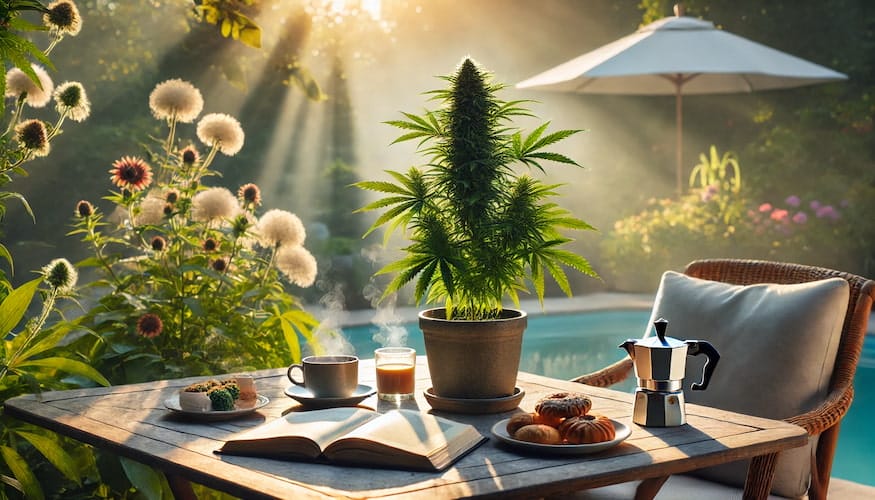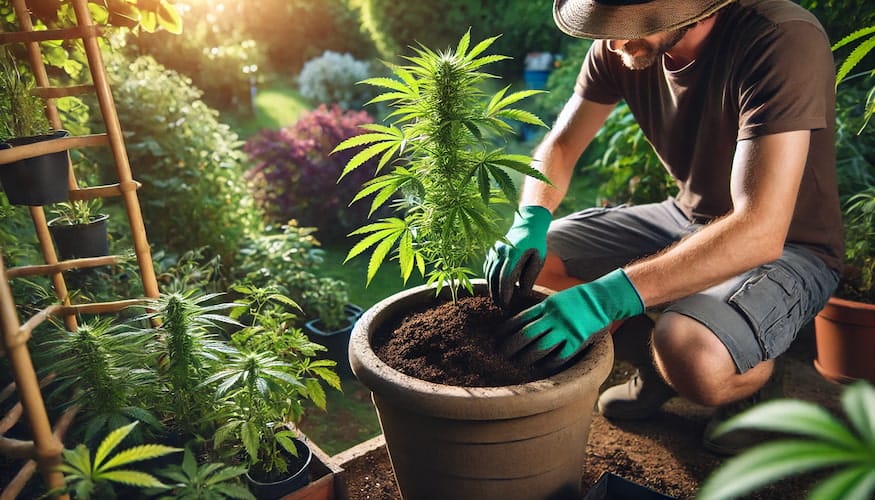The use of cannabis has evolved significantly over the years, with many people now turning to it for a variety of therapeutic and recreational purposes. One of the key considerations for users is the strain of cannabis they choose, as different cultivars can have vastly different effects. For daytime use, the ideal strains are those […]
Feminized Seed Myth-Busting: Fact vs Fiction
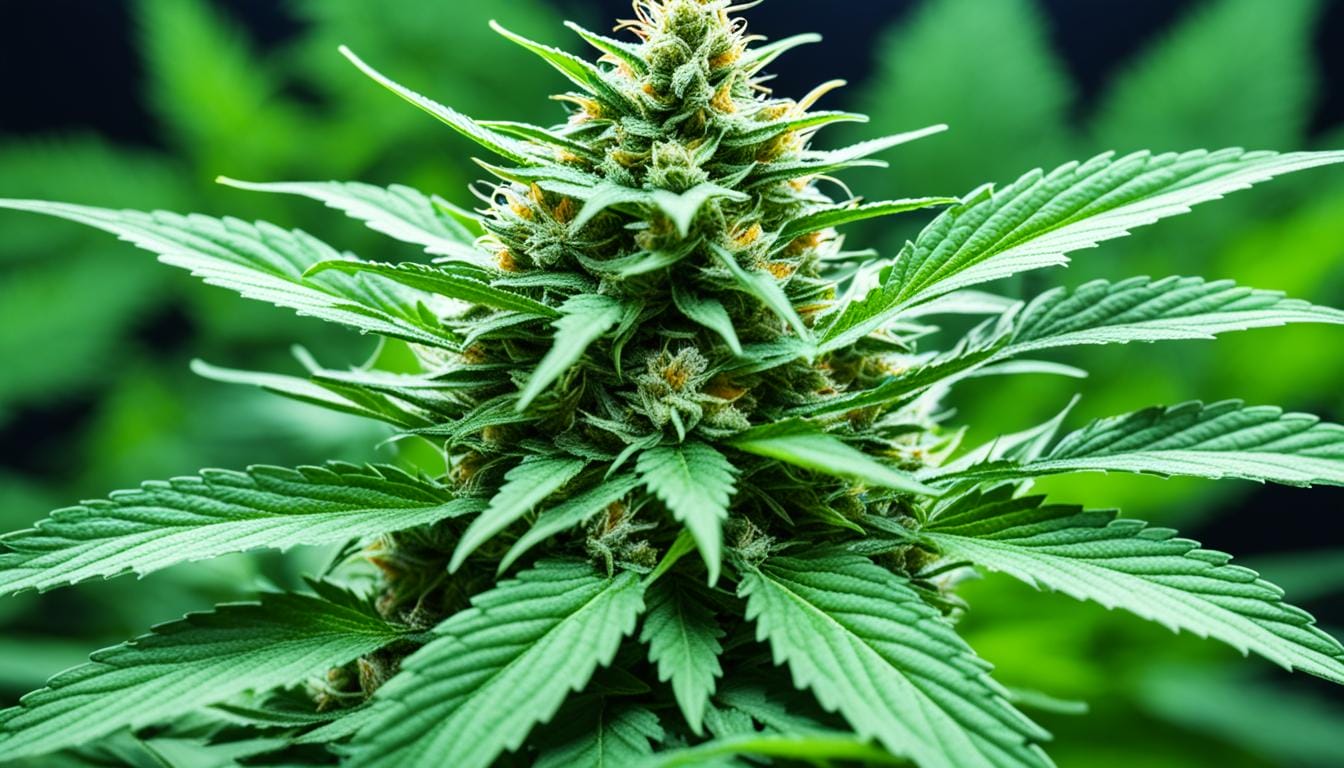
The journey into the heart of cannabis cultivation brings us face-to-face with the intriguing world of feminized seeds. For many, the concept is shrouded in uncertainty and a plethora of myths—but what is the truth about feminized seeds? It’s time to do some feminized seed myth-busting, peeling away layers of hearsay to uncover the facts. By debunking the myths and demystifying feminized seeds, we aim to provide a clearer picture of what these seeds truly offer to the cultivation community. Join us as we explore and understand feminized cannabis seed myths and realities, ensuring growers are well-equipped with knowledge instead of misconceptions.
Key Takeaways
- Establish a foundational understanding of feminized seeds beyond the misconceptions.
- Uncover the efficiency benefits that feminized seeds may offer to cultivators.
- Contrast the traditional beliefs against the current scientific evidence about feminized seeds.
- Identify the realities of growing feminized seeds from seasoned cultivators’ perspectives.
- Learn about the innovation and techniques used in creating feminized seeds.
The Rise of Feminized Cannabis Seeds
The landscape of cannabis cultivation has undergone a significant transformation with the advent of feminized cannabis seeds. Not long ago, these seeds revolutionized the industry, offering an innovative solution to cultivators seeking to maximize their yields without the unpredictability of male plants. We turn our attention now to the origin of feminized seeds and the dynamics contributing to their surging demand.
Origins and Popularity
The origin of feminized seeds is a tale of ingenuity and agricultural advancements. Initially observed as natural occurrences where certain cannabis plants would develop both male and female reproductive organs, dedicated cultivators harnessed this trait to engineer seeds guaranteeing almost exclusively female plants. This turning point marked the inception of feminized seeds into the commercial market and laid the foundation for the rise in popularity of feminized seeds.
| Advantage | Benefit to Cultivators |
|---|---|
| Gender Assurance | Eradicates the unpredictability of male plants in the crop |
| Resource Efficiency | Maximizes use of space and reduces the waste of resources on non-productive plants |
| Time-saving | Eliminates the need to identify and cull male plants, speeding up the cultivation process |
The unmatched convenience and efficiency provided by feminized cannabis seeds have led countless growers to adopt them as a staple. Paired with advancements in breeding techniques and increasing support for cannabis legalization, these seeds have swiftly become a cornerstone of modern cannabis cultivation practices.
How Breeders Create Feminized Seeds
The creation of feminized cannabis seeds is an intricate craft that combines both traditional methods and sophisticated scientific approaches. With the aim of producing seeds that result in exclusively female plants, breeders have mastered and refined a variety of techniques. Let’s delve into some of the old-school methods still in use today, as well as the cutting-edge techniques that have emerged due to advancements in botanical science.
Old School Rodelization Methods
The rodelization method is one of the oldest techniques utilized by breeders to create feminized seeds. This natural process involves allowing the female cannabis plant to enter an extended flowering phase, well past its expected harvest time. The stress of this extended period can lead some female plants to develop male flowers as a survival mechanism—a process known as hermaphroditism—thus enabling them to self-pollinate and produce seeds. These seeds, under the presumption that they inherit this female-predisposed genetic trait, are more likely to grow into female plants.
Feminized seeds born via the rodelization method are cherished for their natural approach to breeding, though it requires keen observation and patience from the grower.
Modern Techniques Involving Ethylene Inhibition
Today’s breeders often turn to more reliable scientific methods, such as the ethylene inhibition method, to guarantee the feminization of seeds. Ethylene is a natural plant hormone critical to the flowering process of female cannabis plants. By inhibiting this hormone, either chemically or through environmental manipulation, breeders can induce the development of male flowers on a genetically female plant. This technique, often involving the use of specific compounds or growth regulators, effectively tricks the plant into producing male flowers laden with pollen that, when used to pollinate other female plants, results in highly feminized seeds.
These techniques, combined with a breeder’s knowledge and experience, have paved the way for the modern cannabis industry, allowing for more efficient and predictable cultivation practices. The dependable production of feminized seeds has made it possible for growers to maximize their grow space and streamline their cultivation efforts, emphasizing the importance of these methods in the cultivation community.
From the natural persuasions of the rodelization method to the strategic hormone manipulation of the ethylene inhibition method, the quest for premium feminized seeds is a blend of past wisdom and modern science. Both methods have their advocates and serve pivotal roles in the evolution of cannabis breeding techniques. As the industry advances, so do the methods, continuously refining how breeders create feminized seeds and elevating the quality of the resulting strains.
Dismantling Common Myths About Feminized Seeds
Despite the growing popularity and use of feminized seeds, misunderstandings continue to cloud the perceptions of many growers and consumers alike. Addressing these misconceptions is crucial to advancing informed and responsible cultivation practices in the cannabis community.
The Hermaphrodite Conundrum
One of the most common misconceptions about feminized seeds is the belief that they are more prone to producing hermaphrodite plants. However, feminized seeds are specifically bred to ensure that they give rise to female plants, reducing the risk of hermaphroditism when cultivated in stable environments. It’s important to understand that stress factors, rather than feminization itself, are more likely to trigger hermaphrodite tendencies in cannabis plants.
Debate on the Naturalness of Feminization
The debate on the naturalness of feminization stirs up significant discussion in the cannabis community. Critics argue that the process of creating feminized seeds strays from natural breeding practices. However, it is worth noting that the techniques employed for feminization, like the application of natural plant hormones, can mimic processes that occasionally occur in nature. Therefore, the techniques used in feminization could be viewed as a harnessing, rather than a distortion, of nature’s potential.
Safety and Toxicity Concerns
Concerns regarding the safety of feminized seeds often arise, with some growers and consumers questioning the potential presence of harmful substances in plants grown from these seeds. Nonetheless, there is no conclusive evidence to support the notion that feminized seeds lead to increased toxicity in final cannabis products. Plants grown from feminized seeds are held to the same rigorous safety standards as those from regular seeds.
Understanding the science behind feminized seeds helps dispel myths and fosters a realistic appreciation for their role in cannabis cultivation.
Let’s further clarify these points with a comparative assessment of some of the key concerns:
| Misconception | Reality |
|---|---|
| Feminized seeds create more hermaphrodites | Properly produced feminized seeds have a low risk of hermaphroditism |
| Feminization is unnatural | Feminization can utilize natural processes found in cannabis plants |
| Feminized seeds may be unsafe | Plants from feminized seeds adhere to safety standards as those from regular seeds |
It is imperative to confront the common misconceptions about feminized seeds head-on, ensuring a nuanced understanding of their value in the cannabis industry. Through continued education and empirical research, the community can navigate around falsehoods related to hermaphrodite plants, debate on the naturalness of feminization, and safety concerns of feminized seeds.
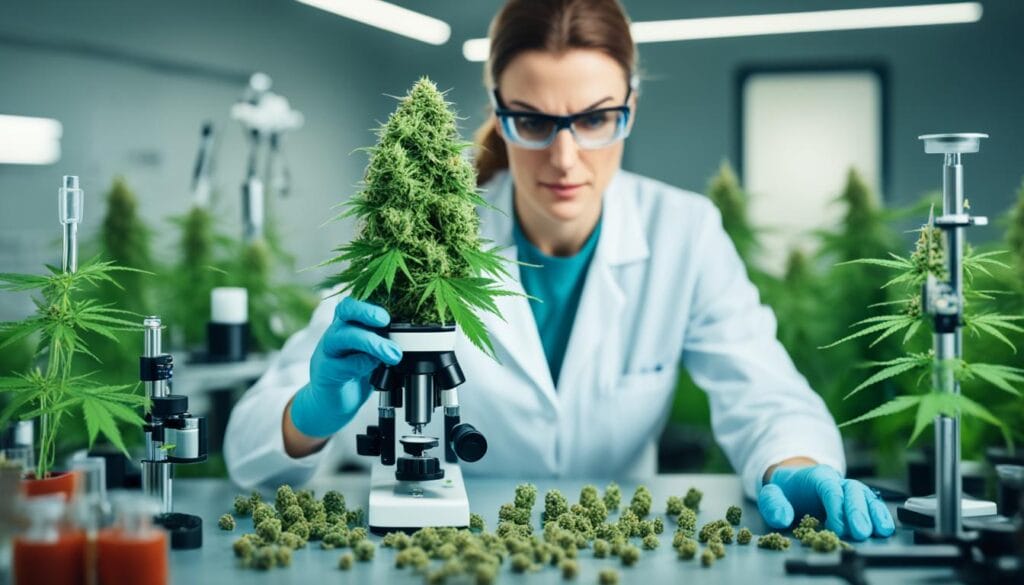
The Pros of Choosing Feminized Seeds
As the cannabis cultivation landscape evolves, savvy growers are increasingly recognizing the multiple advantages of feminized seeds. Here, we delve into why choosing feminized seeds is a sound decision for cultivators looking to maximize their resources and simplify their gardening endeavors.
Efficiency, Space, and Cost
When it comes to time efficiency, feminized seeds are unparalleled. As they are bred to produce only female plants, growers can avoid the meticulous and time-consuming process of sexing and removing male plants, thus streamlining the cultivation process. This leads to enhanced space efficiency as every inch of your growing area is devoted to plants that directly contribute to the yield, ensuring no valuable real estate is wasted on non-productive males.
In terms of cost, starting with feminized seeds minimizes the likelihood of discarding plants and the expenses associated with maintaining a grow space that doesn’t lead to a harvest. Over time, these savings can be significant, enticing growers to favor the initial investment in quality feminized seeds for long-term gains.
Beginner-Friendly Advantages
For those new to cannabis cultivation, feminized seeds offer beginner-friendly seeds that simplify the growing process. Without the need to identify and eliminate male plants, novices can focus on honing their cultivation techniques, ensuring a more manageable learning curve. This catered approach for beginners ensures that even with limited experience, one can achieve a successful harvest and gain the confidence to continue expanding their gardening skills.
As evident, the utility and attractiveness of feminized seeds are underpinned by the trifecta of time, space, and financial efficacies, alongside the compelling introduction they provide to first-time growers. For those seeking to maximize their grow operations or attempting their first foray into cannabis cultivation, the decision to opt for feminized seeds could not be more beneficial.
The Challenges With Feminized Seeds
Embracing feminized seeds can lead to a fruitful cultivation journey, but growers must be well-versed in the challenges that can arise. From pollination difficulties to the strain it puts on one’s wallet, we’ll delve into the complexities of growing these specialized seeds.
Pollination Difficulties
One of the key issues that cultivators face with feminized seeds is the ability to produce seeds. Since feminized seeds are bred to eliminate male chromosomes, the chance of having a male plant that can pollinate the females is vastly reduced. It’s a double-edged sword; while this means nearly all plants will bear flowers, it also complicates breeding programs and seed production. Those looking to propagate their own strains or develop new hybrids might find this trait of feminized seeds particularly limiting.
Higher Initial Investment and Ongoing Costs
Another consideration is the higher cost of feminized seeds. They typically come with a higher initial investment when compared to regular seeds, which can be a deterrent for small-scale growers or hobbyists on a budget. Alongside the upfront costs, there are also ongoing costs to grow cannabis seeds. Nutrients, lighting systems, and other cultivation equipment can all add up, making the overall financial commitment quite considerable.
The goal of highlighting these challenges is not to deter potential growers but to ensure that they step into the world of feminized seed cultivation with eyes wide open, understanding the costs that come along with the trade-offs of convenience and efficiency. Forewarned is forearmed, and with the right preparation, the rewards can certainly outweigh the obstacles.
Feminized vs Regular: Seed Stability and Genetic Expression
When it comes to cannabis cultivation, the choice between feminized seeds and regular seeds is a significant one that affects everything from crop management to harvest outcomes. Understanding the nuances between these two seed types is essential in predicting their behavior and performance in the garden. Below, we delve into the details of seed stability and genetic expression, examining the factors that distinguish feminized and regular seeds, and the implications each has for sexual stability, predictability, genetic diversity, and preservation.
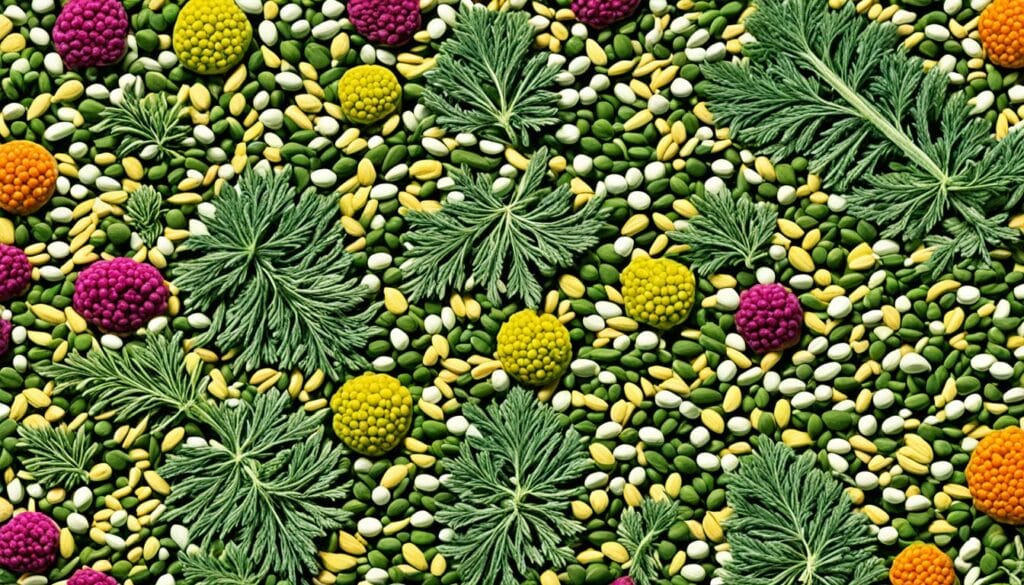
Sexual Stability and Predictability
One of the main differences between feminized seeds and regular seeds lies in their sexual stability. Feminized seeds are bred specifically to eliminate male chromosomes, ensuring that nearly 100 percent of the resulting plants are female. This predictability is a boon for growers focused on efficiency and consistency, as it reduces the surprise of unwanted male plants that do not produce the coveted buds. The stability that comes from feminized seeds simplifies the grow process, allowing cultivators to optimize their resources and attention on flowering plants.
Genetic Diversity and Preservation
While feminized seeds score high on predictability, regular seeds are champions of genetic diversity. They provide a mix of male and female plants, which can be crucial for breeding programs aimed at preserving or developing new strains. Preservation of cannabis’s genetic heritage is a significant consideration for those looking to maintain a broad gene pool for future breeding and adaptation to changing environments.
Ultimately, the choice between feminized seeds vs regular seeds hinges on the grower’s objectives. If the goal is streamlined production and crop uniformity, feminized seeds offer unrivaled advantages. However, for the preservation of genetic diversity and the potential of breeding, regular seeds are an invaluable resource. By aligning seed selection with cultivation goals, growers ensure that every plant is a step toward a successful harvest.
Real Growers’ Experiences with Feminized Seeds
The cultivation of feminized seeds has transformed the agricultural landscape, offering a unique spectrum of advantages to cannabis cultivators. Documenting the growers’ experiences with feminized seeds sheds light on the practical benefits and challenges these innovative products have introduced to the industry.
Case Studies and Growers’ Testimonials
Through an array of case studies, growers have shared their success stories and some of the obstacles they faced while nurturing feminized seeds. These anecdotes capture the essence of real farming scenarios, presenting a comprehensive overview of feminized seed cultivation. Testimonials from seasoned growers underline the heightened consistency and yield made possible by these genetically refined seeds.
“The switch to feminized seeds has dramatically reduced the unpredictability of my harvest. It’s a game-changer for resource allocation and planning,” commented a large-scale grower from Colorado.
Conclusion
Throughout this article, we’ve taken a comprehensive journey to unveil the reality behind feminized cannabis seeds, offering a clear summary of feminized seed myths and facts. The rise of feminized seeds signals a shift in cultivation preferences as breeders and growers recognize their potential to streamline the growth process, ensuring a predominantly female crop—a boon for both commercial operations and home enthusiasts. The creation of these seeds, once shrouded in mystery, has been demystified, revealing the ingenuity behind modern breeding techniques, from the simplicity of rodelization to the sophistication of ethylene inhibition.
We’ve tackled head-on the common misconceptions, providing clarity and dispelling the unfounded concerns that often circulate within the cannabis community. Our discussion has illuminated the tangible benefits feminized seeds offer, such as time and resource savings, while not shying away from the obstacles one might face, like the delicate matter of pollination or the financial considerations that accompany cultivation. Real-world testimonials have added depth to our understanding, highlighting diverse experiences and success stories that resonate with growers of all levels.
As we conclude this exploration, we do so with the intention of empowering you, the reader, with knowledge that enables informed decisions in your cultivation ventures. May this summary of feminized seed myths and facts serve as a beacon, guiding you toward more confident and successful harvests.
FAQ
What are feminized seeds?
Why have feminized seeds become popular?
How do breeders create feminized seeds?
Are feminized seeds more prone to producing hermaphrodite plants?
Are there any safety concerns associated with feminized seeds?
What are the advantages of choosing feminized seeds?
What challenges come with using feminized seeds?
How do feminized seeds compare to regular seeds in terms of stability and genetic expression?
Are there any real growers’ experiences with feminized seeds?
What are some common myths about feminized seeds?
Back

